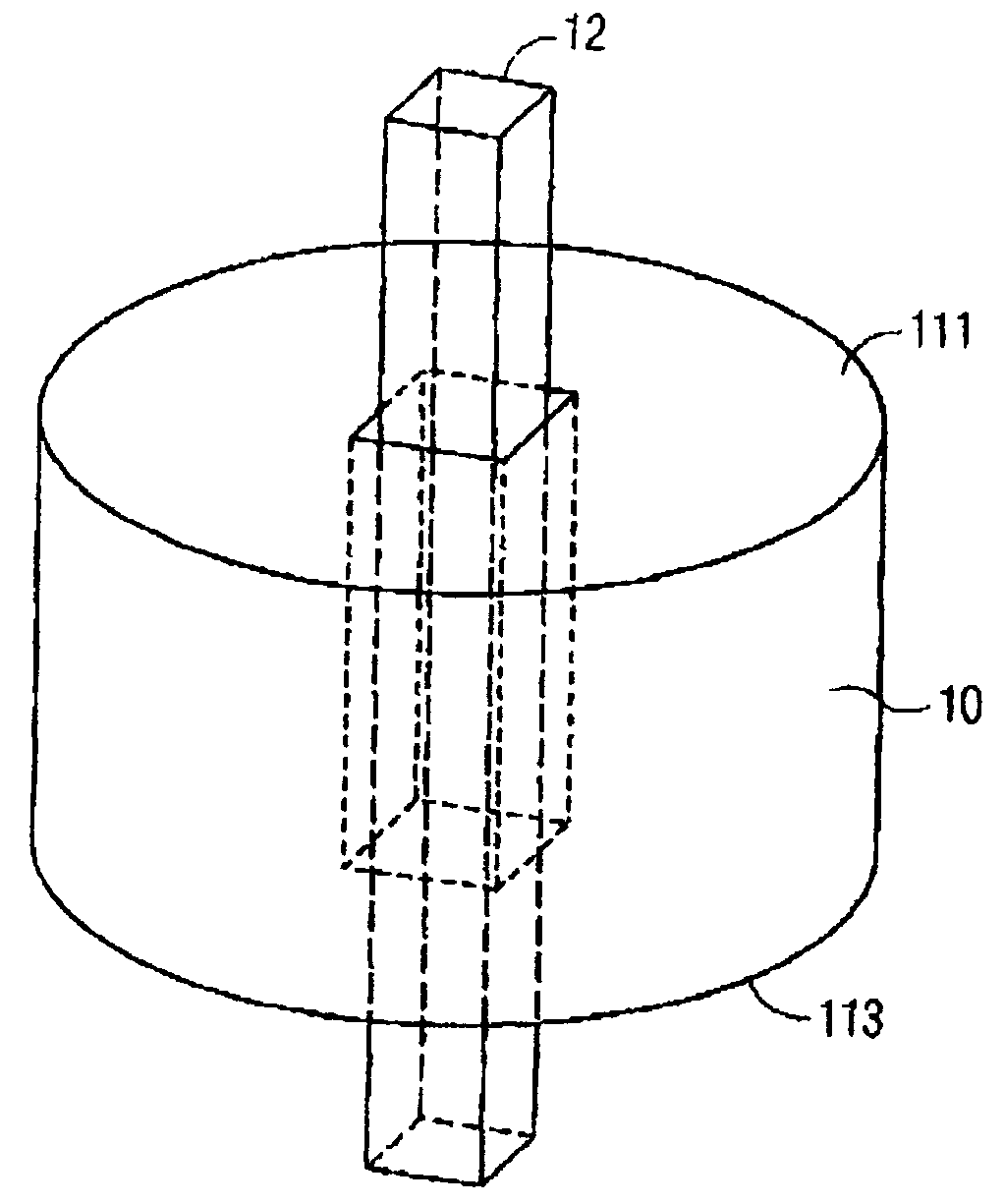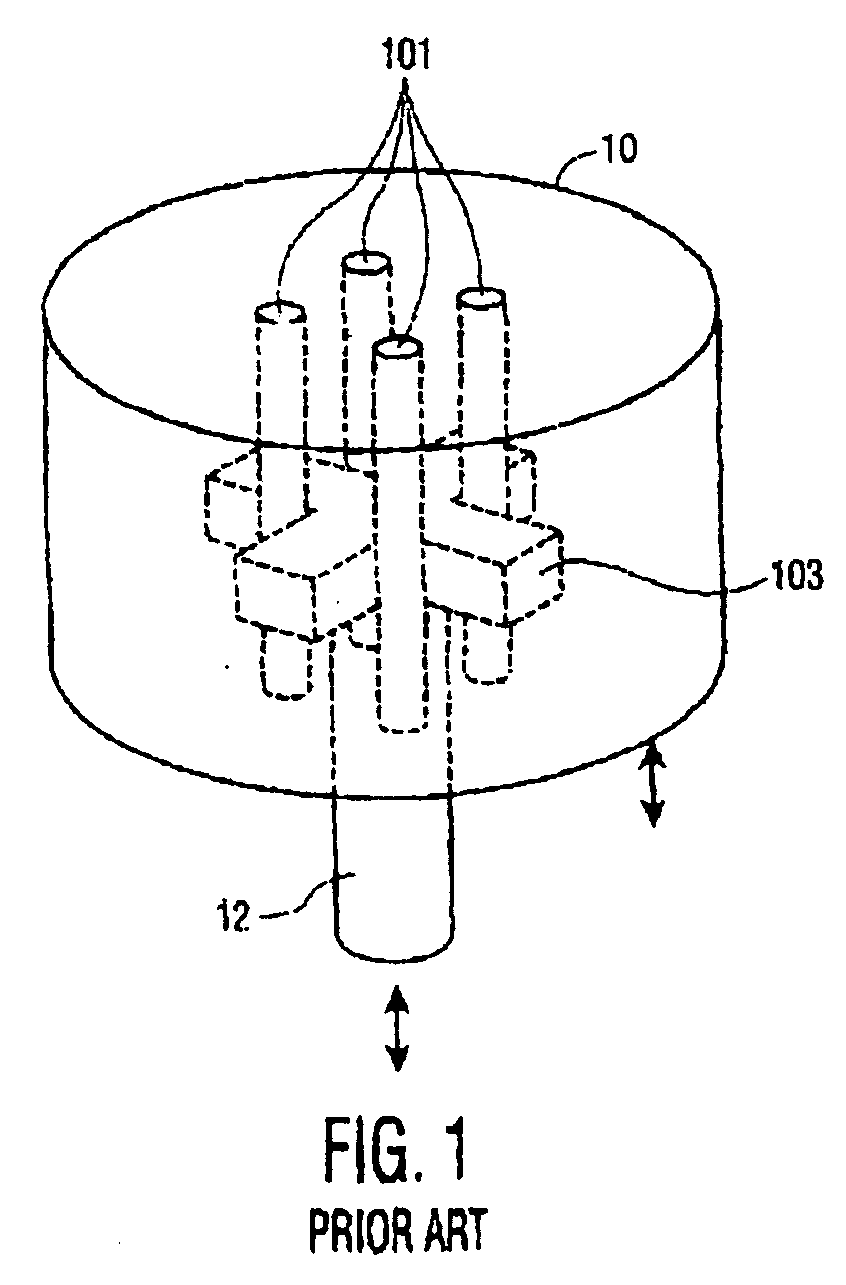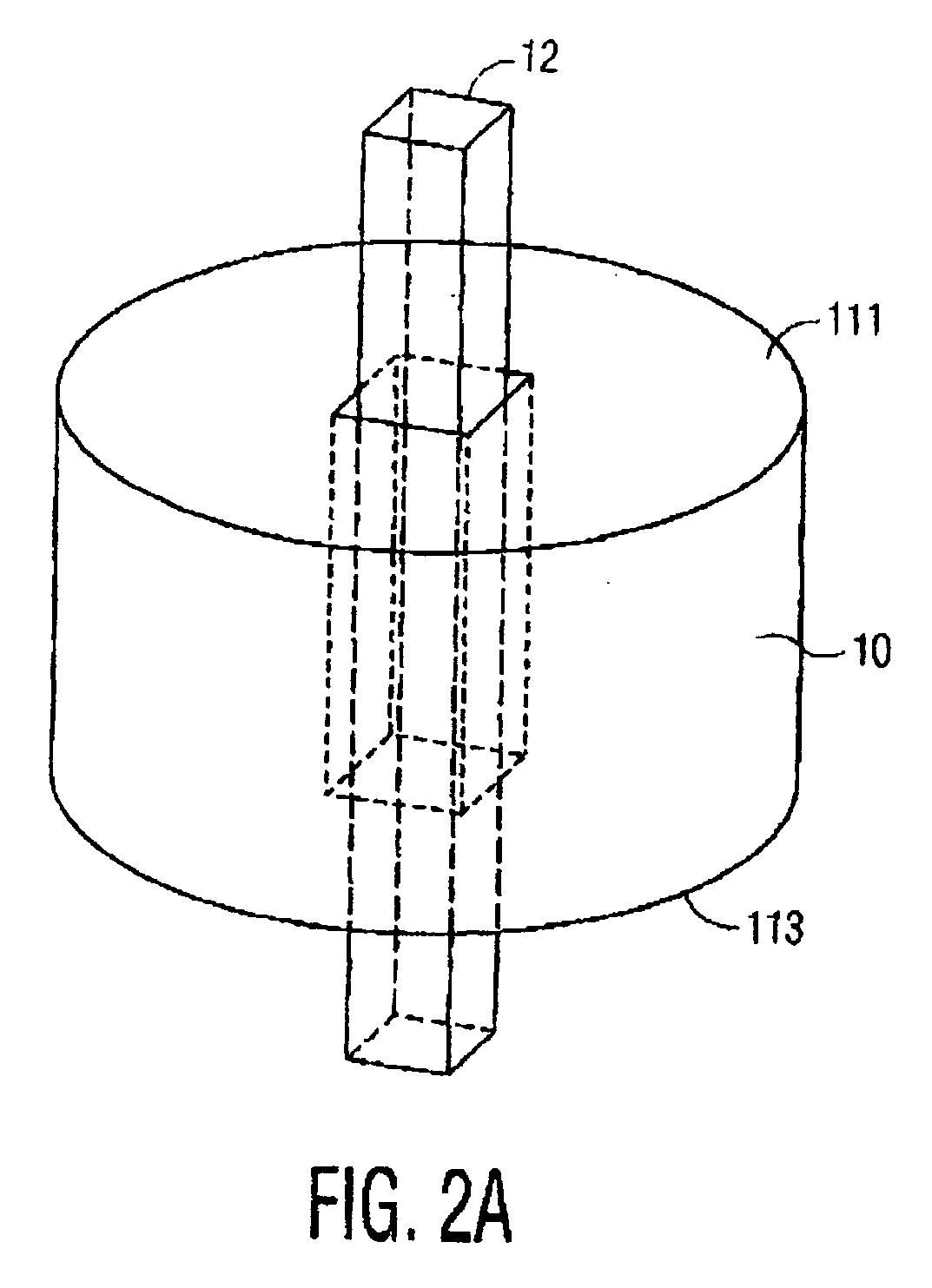Antirotational structures for wave energy converters
a technology of anti-rotational structure and wave energy, which is applied in the direction of enzymology, machine/engine, electric generator control, etc., can solve the problems of potentially damaging twisting or rotational motion, high undesirable, and add to the complexity and cost of design, so as to facilitate the use of pto, improve the efficiency of operation, and improve the effect of electromagnetic coupling
- Summary
- Abstract
- Description
- Claims
- Application Information
AI Technical Summary
Benefits of technology
Problems solved by technology
Method used
Image
Examples
Embodiment Construction
[0025] Referring to FIG. 2A there is shown a square elongated column 12 extending above the top 111 of a shell 10 and below the bottom 113 of the shell. The shell 10 has a central opening shaped to correspond in a complementary manner to the walls of the column to enable the column 12 to fit through the central opening of the shell 10, whereby the shell and column can move vertically, up and down, relative to each other, while preventing any rotational motion. As shown in FIGS. 2A and 2B, the sides of the column (12a, 12b, 12c, 12d) define plane surfaces extending along the column. Corresponding to each side (12a, 12b, 12c, 12d) of the column is a side (103a, 103b, 103c, 103d) of the inner wall of the shell, each inner shell side defining a plane surface which is generally parallel to the corresponding side or face of the column. This structure enables the shell and column to slide past each other while allowing virtually no rotational movement between the shell and column.
[0026]FI...
PUM
| Property | Measurement | Unit |
|---|---|---|
| wave energy | aaaaa | aaaaa |
| electrical energy | aaaaa | aaaaa |
| electric energy | aaaaa | aaaaa |
Abstract
Description
Claims
Application Information
 Login to View More
Login to View More - R&D
- Intellectual Property
- Life Sciences
- Materials
- Tech Scout
- Unparalleled Data Quality
- Higher Quality Content
- 60% Fewer Hallucinations
Browse by: Latest US Patents, China's latest patents, Technical Efficacy Thesaurus, Application Domain, Technology Topic, Popular Technical Reports.
© 2025 PatSnap. All rights reserved.Legal|Privacy policy|Modern Slavery Act Transparency Statement|Sitemap|About US| Contact US: help@patsnap.com



